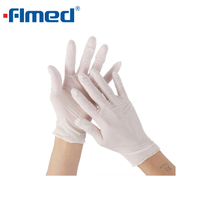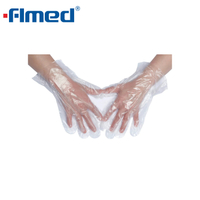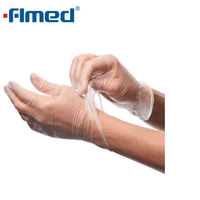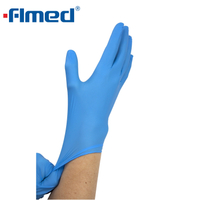
In the world of modern healthcare, infection control is one of the most critical aspects of patient safety and healthcare worker protection. Among the many layers of personal protective equipment (PPE), medical gloves stand out as a frontline defense against the transmission of infectious agents. From hospitals and clinics to laboratories and eldercare facilities, medical gloves have become indispensable tools in maintaining hygiene, minimizing contamination, and promoting safe care environments.
Among the various types of medical gloves available today, nitrile gloves are quickly becoming the preferred choice due to their enhanced protective qualities and allergy-friendly composition.
1. Why Infection Control Matters
Healthcare-associated infections (HAIs) remain a significant concern worldwide. These infections can occur during hospitalization or treatment in any healthcare facility and are often preventable with proper hygiene and protective measures. Cross-contamination between patients, surfaces, and healthcare workers is one of the leading causes of HAIs, which can lead to extended hospital stays, additional medical costs, and increased mortality rates.
Med
ical gloves serve as a simple yet highly effective barrier that minimizes direct skin contact with bodily fluids, blood, excretions, non-intact skin, and contaminated instruments or surfaces. By wearing gloves correctly and changing them between procedures or patients, healthcare workers significantly reduce the risk of spreading bacteria, viruses, and other pathogens.
![forlongmedical forlongmedical]()
2. The Functions of Medical Gloves in Clinical Settings
Medical gloves serve multiple purposes beyond just providing a physical barrier:
Prevent Direct Contact: Gloves protect the skin from harmful agents and reduce the likelihood of pathogens entering through small cuts or abrasions.
Maintain Sterility: In surgical environments, sterile gloves are essential to prevent the introduction of pathogens into the body during operations or wound care.
Protect Patients: Gloves also prevent transmission of microorganisms from healthcare providers to immunocompromised or post-surgical patients.
Enhance Confidence: For both patients and providers, gloves provide a psychological sense of safety and professionalism.
3. Common Types of Medical Gloves
Medical gloves are made from various materials, each with its own advantages and limitations.
Traditionally the most common, latex gloves offer high elasticity and comfort. However, the rise of latex allergies among healthcare workers and patients has prompted many institutions to seek alternatives.
Made from polyvinyl chloride (PVC), these gloves are a cost-effective alternative for low-risk tasks. However, vinyl gloves are less durable, have lower puncture resistance, and provide a looser fit compared to other materials.
Nitrile gloves, made from synthetic rubber, have become the gold standard in many medical environments. They offer the best balance of durability, flexibility, and chemical resistance, and are latex-free, making them ideal for allergy-sensitive environments.
4. Why Nitrile Gloves Are a Superior Choice
Among all glove materials, nitrile gloves have risen to prominence for several compelling reasons:
✔ Superior Barrier Protection
Nitrile gloves offer excellent resistance to punctures, tears, and abrasions, significantly outperforming both vinyl and latex gloves. This durability ensures better protection during high-risk procedures or when handling sharp instruments.
✔ Chemical and Pathogen Resistance
Nitrile provides robust protection against a wide range of chemicals, oils, and infectious agents. This makes them highly suitable for both medical and laboratory environments where exposure to unknown substances may occur.
✔ Latex-Free and Hypoallergenic
Since nitrile is synthetic and free from natural rubber proteins, the risk of allergic reactions is eliminated. This is crucial in healthcare environments where even minor allergic incidents can have serious consequences.
✔ Snug Fit and Tactile Sensitivity
Modern nitrile gloves are designed to fit closely to the hand, mimicking the comfort of latex. Their enhanced tactile sensitivity allows for precision during delicate procedures like wound dressing, catheter insertion, or surgical preparation.
✔ Cost-Effective Over Time
While nitrile gloves may initially cost more than vinyl or latex, their higher strength and lower failure rate mean fewer replacements, better protection, and ultimately lower long-term costs.
5. Proper Usage of Medical Gloves
To be effective in infection control, gloves must be used correctly. Here are a few best practices:
Hand hygiene before and after glove use is essential. Gloves are not a substitute for handwashing.
Change gloves between patients and different procedures to avoid cross-contamination.
Do not reuse disposable gloves. Once removed, they must be discarded.
Avoid touching non-contaminated items (e.g., phones, keyboards) while wearing gloves during patient care.
Use the right size and type of glove for the task—undersized gloves can tear, while oversized ones may hinder dexterity
6. The Role of Gloves During Pandemics and Outbreaks
The COVID-19 pandemic highlighted the importance of gloves in protecting healthcare workers and preventing the spread of infectious diseases. Nitrile gloves, in particular, were in high demand due to their proven ability to resist viruses and maintain integrity during prolonged use.
Beyond COVID-19, gloves continue to be a first line of defense during outbreaks of diseases like Ebola, hepatitis, and influenza. In high-risk areas such as emergency rooms, testing centers, and intensive care units, gloves are considered mandatory PPE.
7. Nitrile Gloves Outside the Hospital
While hospitals remain the primary users of medical gloves, nitrile gloves are widely used in other environments that require infection control or clean handling, including:
Their versatility and reliability make them a valuable protective tool in a wide range of professional settings.
8. Environmental Considerations
One growing concern with disposable medical gloves is their impact on the environment, especially during high-usage periods like pandemics. While nitrile gloves are not biodegradable, some manufacturers are now working on eco-friendlier options, such as recyclable nitrile products or biodegradable polymers that retain durability while reducing environmental harm.
Healthcare facilities are also encouraged to implement waste reduction strategies, including proper glove disposal, recycling programs, and bulk purchasing to reduce packaging waste.
9. Future Innovations in Medical Gloves
With advancements in materials science, we are seeing the development of antimicrobial gloves, biodegradable nitrile, and smart gloves with embedded sensors for diagnostic feedback. The goal is to enhance protection while improving comfort and reducing ecological impact.
As these innovations continue, nitrile gloves remain the benchmark against which new technologies are compared—offering a combination of protection, performance, and user safety that sets them apart.
Conclusion: A Simple Barrier, A Critical Tool
Medical gloves, particularly nitrile gloves, play a foundational role in infection prevention and control. They are not just accessories but critical instruments that protect patients, healthcare workers, and the community from the spread of infectious diseases.
In an age where safety, hygiene, and reliability are more important than ever, choosing the right glove matters. Whether you’re stocking a clinic, hospital, or home care kit, nitrile medical gloves provide the performance and peace of mind that professionals demand.
If you are looking for high-quality, medical-grade gloves—including nitrile gloves designed for infection control—consider reaching out to Forlong Medical. With a strong commitment to safety, compliance, and reliable supply, they can help you select the right glove solution for your healthcare or professional needs.
For more information, product specifications, or to request a quote, please visit www.forlongmedical.com.

 English
English














